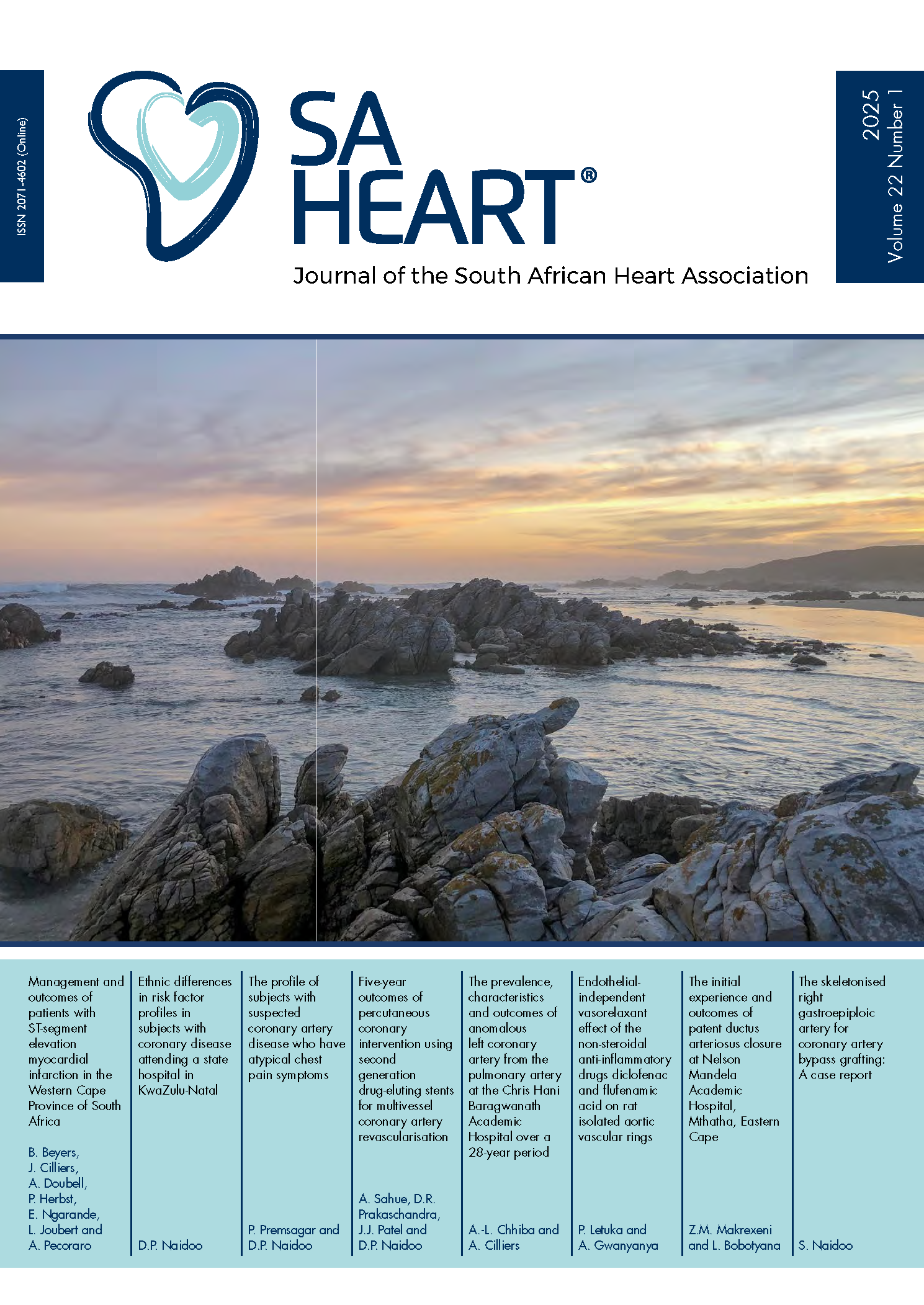The initial experience and outcomes of patent ductus arteriosus closure at Nelson Mandela Academic Hospital, Mthatha, Eastern Cape
Patent ductus arterioles closure using Ampletzer
DOI:
https://doi.org/10.24170/22-1-5174Abstract
Background: Transcatheter closure of the patent ductus arteriosus (PDA) is a common intervention worldwide. An initial experience and outcomes in percutaneous closure of patent ductus arteriosus in a new catheterisation laboratory at Nelson Mandela Academic Hospital (NMAH) in Mthatha was reviewed.
Methods: Data regarding ductal closure using the Amplatzer Duct Occluder type 1 (ADO1) and Amplatzer Vascular Plug II (AVP II) were reviewed and prospectively collected. Demographics, haemodynamics, angiographic patent ductus arteriosus type, complications and outcomes were documented.
Results: A total of 26 patients underwent percutaneous patent ductus arteriosus closure from September 2019 - August 2021(1year 11 months). There were 17 females and 9 males. The median age of the patients was 23 months (range 3 - 60 months) and the median weight was 8.3kg (range 3.6 - 14kg). The mean pulmonary vascular resistance was 4 Wood unit (WU). Seven patients had Krichenko Type C Duct (27%) and 15 (58%) patients had Type A Duct. The ductal size (narrowest diameter at the pulmonic end) mean was 6mm for the Type C Ducts and 3.5mm for the Type A Ducts. Fluoroscopy time was mean was 18 minutes and the radiation dose was about 450 microGreys. Out of the 26 patients that were done catheterisation, 4 patients were not done patent ductus arteriosus closure. Of the 4 patients, 2 patients had tiny PDAs that could not be closed percutaneously, and the other 2 patients had associated coarctation of the aorta. Six of the 7 patients with Type C Duct were closed successfully with Amplatzer Vascular Plug, and 1 patient had device embolisation. Fifteen patients with Type A Duct were closed successfully with Amplatzer Ductal Occluder 1 with no complications. Complete ductal occlusion was achieved in 21 patients on day 1 and only 1 patient had residual ductal flow following the ductal closure.
Conclusion: Percutaneous ductal closure with Amplatzer Duct Occluder at Nelson Mandela Academic Hospital is comparable to other centres in South Africa in terms of safety and outcomes.
Downloads
Downloads
Published
How to Cite
Issue
Section
License
This journal is an open access journal, and the authors and journal should be properly acknowledged, when works are cited.
Authors may use the publishers version for teaching purposes, in books, theses, dissertations, conferences and conference papers.
A copy of the authors’ publishers version may also be hosted on the following websites:
- Non-commercial personal homepage or blog.
- Institutional webpage.
- Authors Institutional Repository.
The following notice should accompany such a posting on the website: “This is an electronic version of an article published in SAHJ, Volume XXX, number XXX, pages XXX–XXX”, DOI. Authors should also supply a hyperlink to the original paper or indicate where the original paper (http://www.journals.ac.za/index.php/SAHJ) may be found.
Authors publishers version, affiliated with the Stellenbosch University will be automatically deposited in the University’s’ Institutional Repository SUNScholar.
Articles as a whole, may not be re-published with another journal.
Copyright Holder: SA Heart Journal
The following license applies:
Attribution CC BY-NC-ND 4.0

